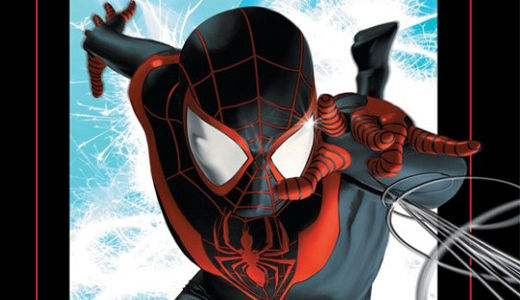
When it comes to comic books, the times are changing for the better. As revealed in issue four of Marvel Comics’ Ultimate Fallout, the alter ego of the new Spider-Man in their fictional “Ultimate” universe will be that of Miles Morales, who is half-Black, half-Hispanic.
As any comic fan knows, the traditional identity of Spider-Man has always been Caucasian photographer Peter Parker. Marvel then created the “Ultimate” universe, which is essentially an alternate reality of heroes. In this world, Parker’s tale was retold in Ultimate Spider-Man, with notable differences. But in June, Parker was controversially killed in issue 160.
Enter Morales, the origin of whom will be revealed in the first issue of a new volume of Ultimate Spider-Man in September.
The well-known lesson Spider-Man always offered (“with great power, comes great responsibility”) “will be the same,” said writer Brian Michael Bendis, in a report by USA Today. Morales is “going to learn that. Then he has to figure out what that means.
“He’s younger than Peter Parker. He’s coming from a completely different background, a completely different world view. It’s Peter Parker’s death that inspires this kid to step up.”
Marvel Comics has, in past decades, championed racial diversity, though it had not yet pushed it into the mainstream. Despite writers’ efforts to introduce new African American, Hispanic, and Asian X-Men, for example, the main fan favorites (like Wolverine and Rogue) were white.
The rise, however, of an African American hero into mainstream culture can be linked to another company – DC Comics, which, in 2000, introduced Static Shock to Saturday morning television. Virgil Hawkins, who was Black, became the hero known as Static. The series was based on an original comic series, which tackled problems ranging from drug abuse to racism to homophobia.
This led to other heroes, like Marvel Comics’ Black Panther (also African American) and Northstar (an openly gay Canadian) being pushed to the forefront. It was a sign of even better things to come.
Soon, an African American Green Lantern was introduced, and now one of the most celebrated heroes, Spider-Man, is championing racial diversity in an artistic medium that had for far too long remained narrow-minded and “played it safe.”
“What you have is a Spider-Man for the 21st century who’s reflective of our culture and diversity,” Marvel Editor-in-Chief Axel Alonso told NBC. “We think that readers will fall in love with Morales the same way they fell in love with Peter Parker.”
Marvel’s inspiration for this change-up in the series may be partially inspired, said the report, by fans themselves. When director Marc Webb undertook the task of rebooting Spider-Man in cinematic form (in the upcoming 2012 film, The Amazing Spider-Man), a grassroots online effort tried to get Webb to cast Donald Glover, an African American actor, in the lead role. These fans maintained that Glover’s race had nothing to do with the basic story and core elements of who Peter Parker was.
That role was, however, taken by Andrew Garfield, who is white.
As for the comics, characters fans love will still make appearances, like Peter’s Aunt May and girlfriend Gwen Stacy (who will also appear in the upcoming film). They will reportedly help Morales in his transition from a young teen into a web-slinging New York City superhero.
Sarah Pichelli, an Italian artist who created a new image for Spider-Man, said, “Maybe sooner or later, a Black or gay hero will be considered something absolutely normal.”
With Spider-Man’s endless popularity and such an unprecedented move by Marvel, it would appear that this is already happening.
Photo: Ultimate Spider-Man, with a newly redesigned costume, will now have the alter ego of Miles Morales, who is half-Black, half-Hispanic, in the comic’s debut in September (from Marvel Comics Official Site).










